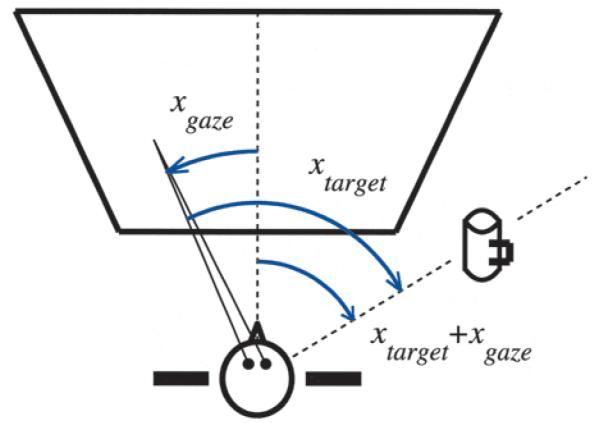Fig. 2.

A coordinate transformation performed by the visual system. While reading a newspaper, you want to reach for the mug without shifting your gaze. The location of the mug relative to the body is given by the angle between the two dashed lines. For simplicity, assume that initially the hand is close to the body, at the origin of the coordinate system. The reaching movement should be generated in the direction of the mug regardless of where one is looking, that is, regardless of the gaze angle xgaze. The location of the target in retinal coordinates (i.e., relative to the fixation point) is xtarget, but this varies with gaze. However, the location relative to the body is given by xtarget + xgaze, which does not vary with gaze. Through this addition, a change from retinal, or eye-centered, to body-centered coordinates is performed.
